Secondary containment systems are becoming essential in industrial, agricultural, and construction operations. With tighter regulations and growing environmental awareness, businesses are adopting these solutions to prevent hazardous material spills, protecting the environment and operational efficiency.
This post explores why secondary containment liners are gaining popularity, their purpose, key benefits, and versatile applications. Understanding these systems is crucial for any organization handling harmful substances.
What is Secondary Containment?
Secondary containment is the practice of creating a barrier around a primary container, such as a tank or storage vessel. The purpose of this secondary barrier is to capture and hold any leaks, spills, or overflows from the primary container. This prevents hazardous materials from escaping into the environment.
The main goal of secondary containment is to protect soil and groundwater from contamination. With stricter environmental laws from agencies like the Environmental Protection Agency (EPA), businesses must implement reliable spill prevention plans. Secondary containment liners are a fundamental part of these plans, ensuring compliance and safeguarding natural resources.
The Surge in Popularity
Several key factors contribute to the increased adoption of secondary containment liners across various industries. These drivers highlight a shift toward more proactive and responsible operational practices.
Growing Environmental Concerns
Public and corporate awareness of environmental issues has grown significantly. The long-term damage caused by soil and water contamination is better understood, leading to greater pressure on industries to prevent spills. Companies are responding by investing in protective measures like secondary containment to demonstrate their commitment to environmental stewardship. By implementing secondary containment, companies can maintain a positive public image and build trust with communities and stakeholders.
Cost-Effectiveness Compared to Remediation
The cost of cleaning up a hazardous material spill can be extremely high. Remediation efforts often involve extensive soil excavation, water treatment, and long-term monitoring, along with significant regulatory fines.
Secondary containment liners offer a highly cost-effective alternative. The initial investment in a liner system is a fraction of the potential cost of a cleanup. By preventing spills before they happen, businesses can avoid massive remediation expenses and potential legal liabilities, making it a sound financial decision.

Ease of Installation and Maintenance
Modern secondary containment liners are designed for straightforward installation. Many systems are prefabricated or can be custom-fit to specific site requirements, which reduces installation time and labor costs. This ease of implementation allows companies to quickly become compliant with regulations without major operational disruptions.
Maintenance is also relatively simple. Routine inspections can identify potential issues before they become serious, and repairs are often quick and easy to perform. The durability of materials used in modern liners ensures a long service life with minimal upkeep, providing a reliable and low-maintenance solution for spill prevention.
Versatility in Applications
The adaptability and flexibility of secondary containment liners makes them suitable for various industries that handle hazardous substances.
Industrial Uses
In the industrial sector, secondary containment is critical. Chemical manufacturing plants, oil refineries, and processing facilities use liners to contain spills from storage tanks, pipelines, and processing equipment. This helps prevent the release of corrosive chemicals, petroleum products, and other toxic substances.
These liners provide a dependable barrier that protects the environment and the facility’s infrastructure. By containing spills, they also help maintain a safe working environment for employees.
Agricultural Applications
Agriculture relies heavily on chemicals such as pesticides, herbicides, and fertilizers. Secondary containment liners are used around storage areas for these substances to prevent them from seeping into the soil and contaminating groundwater or nearby water bodies. This is crucial for protecting crop health and ensuring food safety.
Farms also use liners for fuel storage tanks and livestock waste lagoons. In these applications, the liners prevent fuel leaks and stop animal waste from contaminating the surrounding land and water sources, supporting sustainable farming practices.
Construction and Infrastructure Projects
Construction sites often involve temporary storage of fuels, oils, and other chemicals. Secondary containment liners provide a temporary and effective spill control solution for these materials.
For permanent infrastructure projects, such as power plants and water treatment facilities, liners are integrated into the design to provide long-term spill protection. This ensures that these essential facilities operate safely and in compliance with environmental standards.
Key Benefits of Secondary Containment Liners
The use of secondary containment liners offers several important advantages that extend beyond simple spill prevention. These benefits reinforce their value as a critical operational tool.
Preventing Soil and Groundwater Contamination
The primary benefit of secondary containment liners is the prevention of environmental contamination. By capturing spills at the source, they stop hazardous materials from entering the soil and reaching groundwater. This is vital for preserving the quality of natural resources and protecting ecosystems from harm.
Protecting water sources is particularly important, as groundwater is a major source of drinking water for many communities. Effective containment helps ensure that these water supplies remain safe and clean for public use.
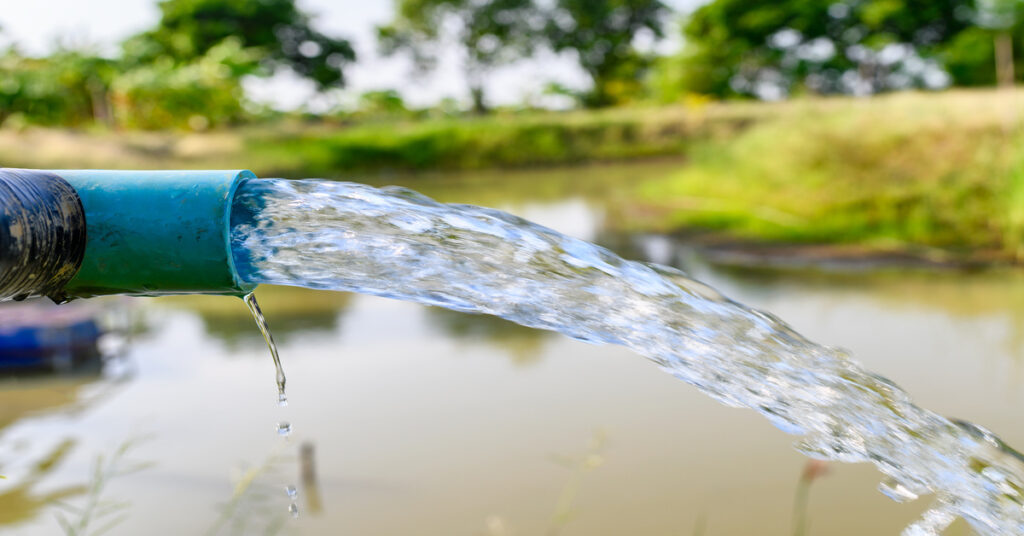
Compliance with Environmental Regulations
Regulatory compliance is a major concern for any business handling hazardous materials. Agencies like the EPA have strict requirements for spill prevention and control. Secondary containment liners are a necessary method for meeting these regulatory standards.
By installing a proper containment system, companies can avoid costly fines and legal penalties associated with non-compliance. It also demonstrates a commitment to responsible operations, which can be beneficial during regulatory inspections and audits.
Enhanced Safety for Workers and Communities
Hazardous material spills pose significant risks to human health. Direct contact with or inhalation of toxic substances can cause serious health problems for workers and residents in nearby communities. Secondary containment minimizes these risks by keeping spills contained within a manageable area.
This enhanced safety helps create a more secure work environment and protects the well-being of the public. By preventing uncontrolled releases, liners play a crucial role in public health and safety.
Browse Types of Secondary Containment Liners
Understanding the benefits and applications of secondary containment liners is the first step toward safeguarding your operations. The next is choosing the right solution for your specific needs. Royal Liner offers a wide range of high-quality secondary containment liners designed for durability and compliance.
We invite you to explore our selection of products to find the perfect fit for your industrial, agricultural, or construction project. Our team is ready to help you navigate your options and ensure you have the most effective spill prevention system in place. Protect your assets and the environment with a trusted solution.
Your Partner in Environmental Protection
The growing popularity of secondary containment liners reflects a broader industry trend toward proactive environmental management and risk reduction. Their ability to prevent soil and groundwater contamination, ensure regulatory compliance, and enhance safety makes them an indispensable tool.
Investing in a reliable secondary containment system is a strategic decision that protects your business and the environment. If you are ready to enhance your spill prevention measures, our experts are here to help. Contact Royal Liner today for a consultation and discover how our solutions can provide the security and peace of mind you need.
Properly storing food-grade chemicals is critical for maintaining product integrity and ensuring public safety. The right containment system prevents contamination, leaks, and material degradation. Tank liners provide a crucial protective barrier, extending the lifespan of storage tanks and safeguarding the chemicals within.
Choosing an appropriate liner is essential, as different materials offer varying levels of chemical resistance, durability, and cost-effectiveness. This guide explores the best tank liner options available for food-grade chemical storage to help you make an informed decision for your operational needs.
Types of Food-Grade Chemical Tank Liners
Several materials are suitable for lining tanks that store food-grade chemicals. Each has distinct properties that make it ideal for specific applications. Understanding these properties is the first step toward selecting the right solution for your facility.
The most common materials include polyethylene, polytetrafluorethylene (PTFE), and polyvinyl chloride (PVC). Factors such as the type of chemical stored, operating temperatures, and budget will influence which liner is the best fit. A thorough evaluation of these materials ensures optimal performance and regulatory compliance.
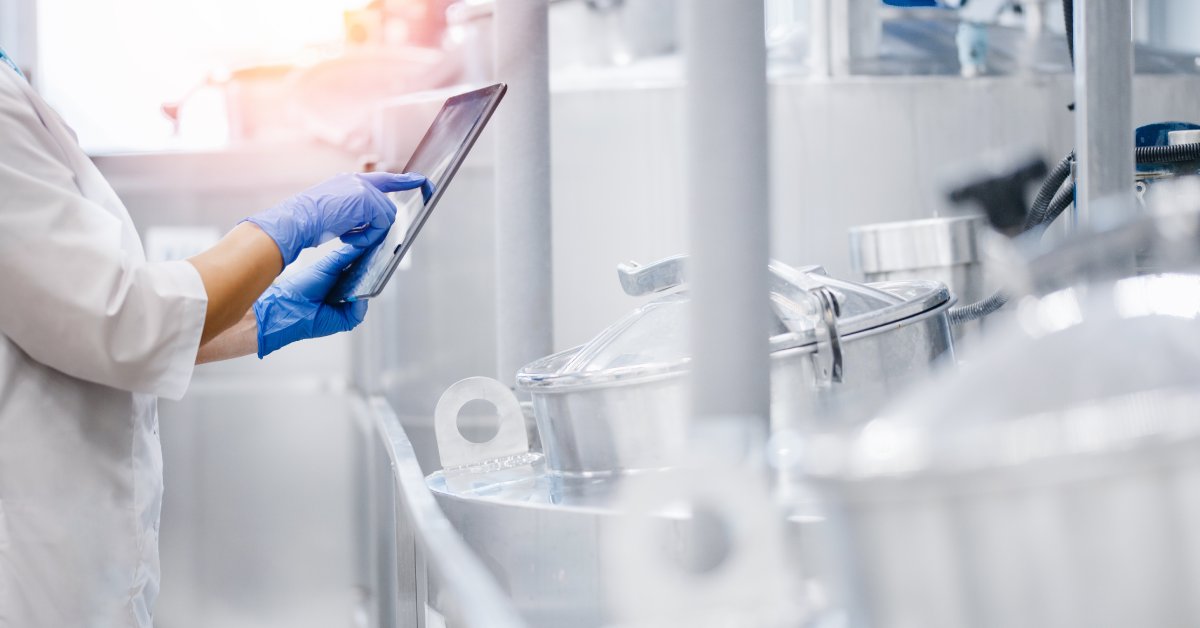
Key Features and Benefits of Tank Liners
Tank liners offer significant advantages for storing food-grade chemicals. They act as a primary or secondary containment solution, protecting the tank structure and the stored product. Investing in a high-quality liner is a preventative measure against costly repairs and catastrophic failures.
Corrosion Resistance
Corrosion is a primary concern when storing chemicals, even those classified as food-grade. A corrosion-resistant lining creates a barrier that prevents the chemical from contacting the tank’s surface. This feature is vital for preserving the structural integrity of steel or concrete tanks.
Royal Liner provides highly resistant liners that prevent corrosive materials from degrading your storage vessels. This protection extends the tank’s operational lifespan and reduces the need for frequent and expensive maintenance. Without this protective layer, tanks are susceptible to wear that can lead to contamination.
Leak Prevention
Even small leaks can lead to significant product loss and potential environmental hazards. Tank liners are designed to be a seamless, impermeable barrier that blocks leaks. This is especially important for aging tanks that may have developed small cracks or weak points over time.
Tank liners provide an additional layer of defense against leaks, ensuring that chemicals remain safely contained. This preventative solution eliminates the constant worry of monitoring tanks for potential issues, allowing for more secure operations. A reliable liner is an investment in the safety of your employees, facility, and the surrounding environment.
Extended Tank Lifespan
Replacing a large storage tank is a time-intensive and expensive undertaking. Installing a tank liner is a cost-effective way to extend the lifespan of your existing storage systems. The liner absorbs the wear and tear that would otherwise affect the tank itself.
By protecting the tank from corrosion, abrasion, and chemical attack, tank liners can significantly delay the need for replacement. This allows you to maximize the return on your initial investment in storage infrastructure. It is a proactive approach to asset management that saves money and minimizes operational downtime.
Contamination Prevention
In the food and beverage industry, preventing product contamination is non-negotiable. Tank liners ensure that the stored chemical does not interact with the tank material, which could introduce impurities. A clean, inert lining is essential for maintaining the quality and safety of food-grade products.
Tank liners from Royal Liner are manufactured to meet stringent quality standards, ensuring they do not leach harmful substances into the stored chemicals. This feature protects your materials and helps your business adhere to industry regulations. Maintaining product purity is fundamental to consumer trust and brand reputation.
Comparing Tank Liner Materials
Selecting the right material for your tank liner requires comparing their properties. Chemical resistance, temperature tolerance, durability, and cost are all important factors to consider. A direct comparison helps clarify which material best suits your specific storage requirements.
Polyethylene vs. PTFE
Polyethylene (PE) liners are a popular and cost-effective choice for a wide range of chemicals. They offer good chemical resistance, particularly against acids and bases. High-Density Polyethylene (HDPE) is known for its strength and durability, making it suitable for many food-grade applications.
Polytetrafluoroethylene (PTFE) liners provide superior chemical resistance and can withstand a wider range of temperatures. PTFE is almost completely inert, meaning it will not react with the stored chemicals. However, it is a more expensive option compared to polyethylene.
PVC vs. Polyethylene
Polyvinyl Chloride (PVC) liners are flexible and offer good resistance to many chemicals, oils, and greases. They are often used for secondary containment applications due to their durability and affordability. While suitable for some food-grade chemicals, you'll need to verify their compatibility for each specific substance.
Polyethylene liners generally offer broader chemical resistance than PVC, especially at higher concentrations and temperatures. The choice between PVC and polyethylene often comes down to the specific chemical you’re storing and the overall cost.
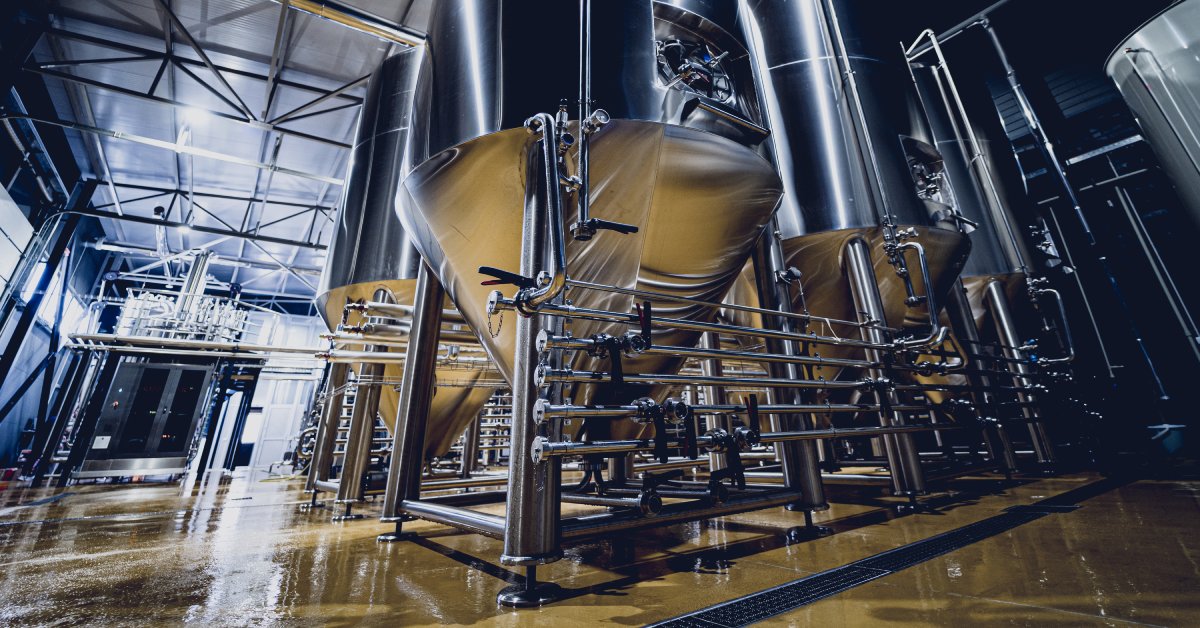
How to Select the Best Tank Liner
Choosing the right tank liner requires careful assessment of your specific storage needs. A systematic approach ensures you select a liner that provides reliable, long-term performance. Considering all relevant factors will help you avoid costly mistakes.
Identify the Stored Chemical
The first and most important step is to identify the exact chemical you will be storing. Different chemicals have different effects on liner materials. Consult a chemical resistance chart to verify that the liner material is compatible with the chemical, its concentration, and its temperature.
Consider Operating Temperatures
The temperature of the stored chemical and the ambient environment will affect the performance of the liner. Some materials become brittle at low temperatures or may soften at high temperatures. Ensure the liner you choose is rated for the full range of operating temperatures your tank will experience.
Evaluate Tank Condition
The age and condition of your tank also play a role in liner selection. For older tanks with surface imperfections, a thicker or more flexible liner may be necessary to ensure complete coverage and prevent punctures. A smooth, well-prepared tank surface is ideal for any liner installation.
Consult with an Expert
When in doubt, consult with a tank lining specialist. An expert can provide guidance based on years of experience with various applications and industries. Our experts at Royal Liner can help you navigate the complexities of material selection and ensure you make the right choice.
Where to Find Chemical Tank Liners
When you need a reliable solution for your chemical storage needs, finding a trusted manufacturer is key. Royal Liner has over 75 years of combined experience designing and manufacturing chemical tank liners for various industries, including those handling food-grade chemicals.
We offer solutions for manufacturing, chemical production, water treatment, and farming. Our team of specialists understands the unique challenges associated with each industry and can help you find the perfect liner for your tank, pit, or secondary containment system.
Secure Your Storage System Today
Investing in the right tank liner is a critical step in ensuring the safe and efficient storage of food-grade chemicals. A high-quality liner prevents corrosion, stops leaks, and extends the life of your tanks, ultimately protecting your employees, your business, and the environment.
By carefully considering the types of materials available and your specific operational needs, you can select a solution that offers long-term value. Do not wait for equipment failure to become a concern. Contact Royal Liner today to discuss your requirements or to request a quote for your chemical containment needs.
Tank liners are pivotal to advancing Environmental, Social, and Governance (ESG) objectives. These liners contribute to sustainability initiatives by preventing leaks, protecting assets, and enhancing operational safety. Through their advanced materials and design, tank liners support environmental stewardship, reduce waste, and minimize ecological disruptions.
Their application promotes compliance with regulatory standards while also fostering ethical practices and operational transparency. Tank liners play a significant role in helping industries achieve their ESG goals, driving long-term value for stakeholders.
Prevent Contamination
Tank liners prevent the contamination of soil and groundwater, supporting environmental preservation efforts. Their reliable barrier properties limit chemical leaks and spills, maintaining ecological balance. This barrier safeguards natural habitats and protects biodiversity in surrounding areas. Preventing pollutants from spreading into the environment aligns an organization with sustainable operational goals.
By stopping damage at its source, tank liners minimize the need for costly remediation efforts. Implementing tank liners actively counters risks that could otherwise lead to long-term environmental harm.
Improve Longevity
Effective corrosion resistance through tank liners extends the life cycle of storage tanks. Reducing the frequency of tank replacements significantly lowers material consumption and waste generation. Less frequent use of raw materials contributes to resource conservation, a core pillar of sustainability. Beyond the immediate operational cost savings, this longevity advances efforts to minimize industrial waste streams.
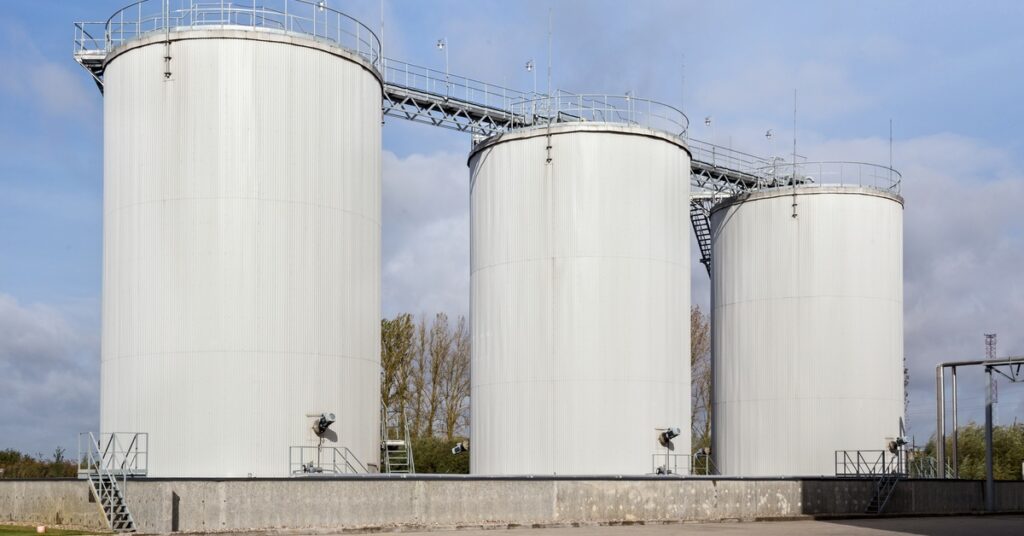
Reduce Emissions
Tank liners reduce hazardous emissions from chemical storage systems. By creating an airtight barrier, they prevent volatile organic compounds (VOCs) and other harmful substances from escaping into the air.
This barrier reduces air pollution and controls workplace hazards caused by chemical exposure. Lower emissions also demonstrate a commitment to shrinking your organization’s carbon footprint. Adopting this technology showcases a proactive approach to tackling industrial emissions.
Reduce Cross-Contamination
The versatility of tank liners supports industries in using multiple products within one system without cross-contamination risks. Their advanced design accommodates storage for chemicals, fuel, or water without compromising purity levels. Cross-industry adaptability eliminates the need for additional infrastructure, further supporting sustainable practices.
Investing in tank liners serves operational flexibility while minimizing resource dependency. Adopting their use streamlines product transitions, enhancing efficiency and lowering costs. This adaptability reduces capital investments and aligns with environmentally responsible strategies.
Increase Workplace Safety
Tank liners foster workplace safety by maintaining the structural integrity of industrial storage tanks. They effectively mitigate risks associated with leaks and chemical exposure for your workforce. Safe containment minimizes accidents, aiding compliance with occupational health and safety regulations. Their protective function also fosters trust among employees, who value working under secure conditions. Investing in employee well-being aligns your practices with ESG’s social pillars, cultivating a safer, more ethical operational environment.
Enable Organizations To Meet Environmental Requirements
Implementing tank liners enables organizations to meet stringent regulatory requirements related to environmental and industrial safety. They safeguard against noncompliance, reducing penalties and reputational damage. When you meet these benchmarks, you demonstrate accountability and alignment with long-term environmental commitments. The high-performance features of liners foster confidence among stakeholders, reinforcing the integrity of your operations.
Conserve Valuable Resources
Tank liners conserve valuable resources, including stored liquids and chemicals, by containing them effectively. This containment reduces losses caused by leaks, optimizing resource utilization within your operations. Resource conservation contributes to cost savings while minimizing environmental pressures associated with production and extraction.
Using tank liners aligns storage systems with global sustainability initiatives focused on reducing inefficiencies. Prioritizing the conservation of materials reflects your company’s broader ESG commitment. This operational efficiency resonates with stakeholders, who recognize the tangible benefits of environmentally conscious practices.
Reduce Waste
Tank liners support waste reduction initiatives through their durable and reusable design. Long-lasting liners decrease disposal frequencies, limiting the environmental impact of industrial waste streams. Their design prioritizes sustainability by extending functional lifespans without compromising performance. Utilizing tank liners minimizes landfill contributions, exemplifying an actionable step toward achieving zero-waste goals. This durability optimizes operational productivity while strengthening your leadership position on waste-management strategies.
Prevent Hazards
Incorporating tank liners into storage systems highlights a commitment to operational transparency and governance excellence. Their role in preventing environmental hazards creates confidence among regulators, investors, and communities. Transparent risk management practices enable you to build positive stakeholder relations while meeting ESG governance priorities.
Demonstrating foresight in mitigating environmental risks reflects a culture of ethical decision-making. The adoption of innovative technology—such as tank liners—represents forward-thinking leadership and accountability, both of which are vital for establishing trust.
Protect Against Extreme Conditions
Tank liners protect against extreme conditions, such as chemical reactions or temperature fluctuations, providing consistent performance. Their resilience reduces unexpected maintenance requirements and system downtimes. Achieving predictable outcomes strengthens operational reliability, which in turn builds trust with stakeholders.
Addressing environmental and industrial challenges without compromising efficiency aligns directly with sustainable values. Improving tank durability through targeted solutions such as liners enhances the overall efficiency and dependability of your operational systems.
Lower Risks
Industries using tank liners benefit from lower operational risks due to their advanced protective properties. Reduced risk creates a stable operational structure that resonates with environmental and financial performance metrics. Safe containment technologies limit vulnerabilities associated with spills or tank failure.
Their use strengthens your organization’s crisis-prevention framework and reflects foresight in addressing critical ESG challenges. This focus on risk mitigation enhances stakeholder confidence in your ability to lead sustainably and responsibly.
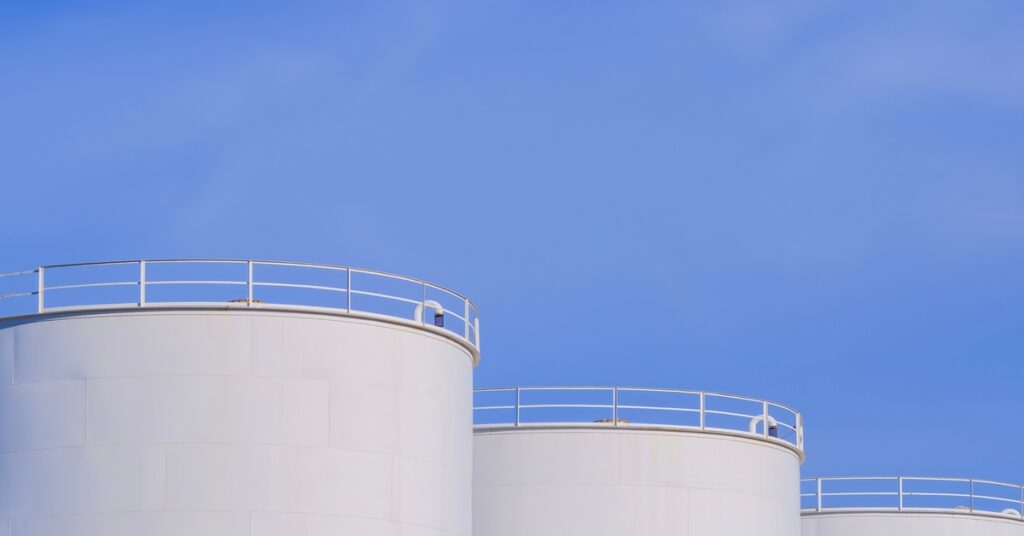
Reduce Energy Consumption
Advanced tank liners reduce energy consumption during maintenance procedures, supporting energy-efficiency objectives. Their durable design lowers dependency on intensive repair processes. With fewer maintenance disruptions, energy savings seamlessly contribute to your ESG performance targets. Through operational optimizations powered by innovative liners, you actively reduce your ecological footprint while maintaining reliable systems.
Demonstrate Corporate Responsibility
Tank liners demonstrate corporate responsibility in environmental conservation. Their widespread adoption reflects your dedication to meeting communal expectations for sustainable solutions. Such practices show respect for environmental ethics and enhance corporate reputation.
Prioritizing solutions that prevent contamination resonates with your broader audience, including investors and advocacy groups focused on ESG metrics. Establishing this framework reinforces sustainable asset management, furthering leadership positions within your sector.
Prevent Spills
Deploying tank liners allows for efficient use of storage capacity, preventing spills that disrupt volumetric planning. Operational efficiencies directly align with sustainability goals while lowering costs tied to lost resources. These liners showcase effective problem-solving tools that enhance both business performance and environmental standards. Their ability to optimize processes reflects your dedication toward balancing industrial performance with environmental responsibilities.
Investing in tank liners meets the requirements of ESG goals through a sustainable, socially responsible, and governance-focused approach. Their capability to prevent environmental harm, enhance safety, and improve operational efficiencies positions you as a leader in environmental integrity.
Adopting such innovative technologies fosters accountability and proactive environmental management, and Royal Liner can make adoption easy with our high-quality tank liners. These advanced containment solutions meet regulatory requirements and exceed industry standards, showcasing your commitment to sustainable practices and responsible resource management.
Maintaining safety and preventing contamination are top priorities in industries that handle hazardous materials. Secondary containment liners protect the environment and ensure operations comply with regulations. By providing an additional defense layer, they mitigate risks and safeguard both people and the surrounding ecosystem. If your operations involve potential spills or leaks, secondary containment liners are crucial.
They Contain Spills Effectively
Secondary containment liners serve as robust physical barriers designed to trap spills or leaks within a designated area. By swiftly containing hazardous substances, these liners prevent the spread of contamination into the surrounding soil, water systems, and nearby properties. This containment helps avoid widespread environmental damage and makes cleanup efforts focused and manageable.
They Comply With Environmental Regulations
Industries today face increasingly strict environmental laws and regulations aimed at preventing spills and minimizing their impact. Secondary containment liners simplify compliance by addressing the core requirements of spill containment. By implementing these systems, businesses can reduce the risk of regulatory fines, legal actions, and reputational damage, all while promoting safer, more environmentally conscious operations.
They Protect Groundwater and Soil Quality
Leaks from storage tanks, pipelines, or industrial operations can pose serious threats to soil health and groundwater resources. When toxic substances penetrate the earth, they can cause long-lasting environmental damage and harm local ecosystems. Secondary containment liners provide effective barriers that prevent hazardous chemicals from seeping into the ground, safeguarding vital environmental assets and ensuring the area’s long-term sustainability.
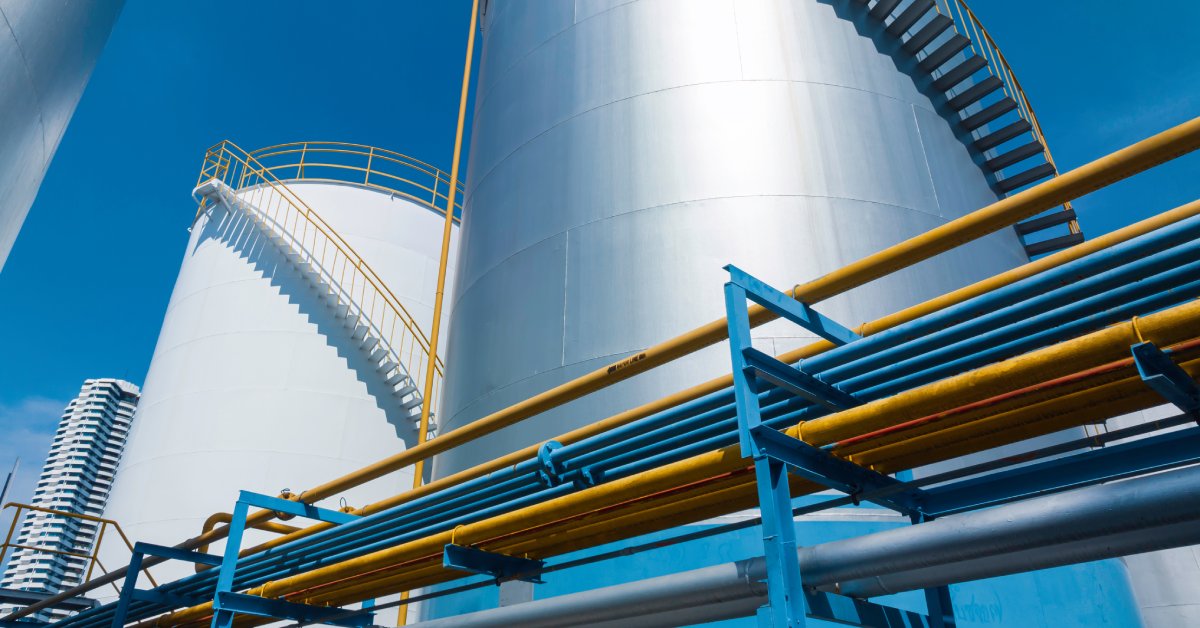
They Minimize Environmental Liability
Environmental spills can have costly consequences, including expensive cleanup operations, lawsuits, and damage to a company’s reputation. When you implement secondary containment liners as part of a spill prevention strategy, you can significantly reduce the likelihood of such incidents. This proactive approach not only minimizes financial risk but also demonstrates a commitment to responsible environmental stewardship.
They Enhance Workplace Safety
Handling hazardous materials comes with inherent risks, especially for workers. Secondary containment systems reduce accidental exposure by effectively containing spills and leaks and keeping harmful substances away from the workforce. This containment improves workplace safety, reduces injury rates, and fosters a healthier, more secure environment for employees to perform their duties.
They Adapt to Various Industrial Applications
Secondary containment liners are highly versatile; you can tailor them to suit a wide range of industries, including oil and gas, chemical manufacturing, agriculture, and wastewater treatment. These liners can meet specific operational needs, making them ideal solutions for diverse industrial scenarios, such as for storage tanks, chemical processing facilities, or agricultural runoff.
They Prevent Costly Cleanup Operations
Cleaning up spills is not only expensive but also time-intensive, and it often requires specialized teams and equipment. Secondary containment liners drastically reduce the risk of spills, minimizing the need for costly remediation efforts. This proactive measure ensures business continuity and preserves valuable resources.
They Prolong Storage Tank Integrity
Leaks from storage tanks can cause significant damage to the surrounding area, harm the environment, and compromise the tanks themselves, often resulting in costly repairs or replacements. A secondary containment liner acts as an additional defense mechanism by creating a protective barrier between the tanks and external environmental factors.
These liners not only contain leaks before they cause harm but also minimize the impact of corrosive substances or weather-related wear and tear on the tanks. By reducing the risk of external and internal damage, secondary containment systems extend the lifespan of storage systems and ensure the safe containment of hazardous or valuable materials, saving businesses money in the long run.
They Support Sustainable Practices
Investing in secondary containment systems reflects a company’s commitment to sustainability and environmental stewardship. These systems prevent spills and contamination that could harm ecosystems, pollute water sources, and degrade soil quality. Taking a proactive approach reduces a company’s environmental footprint, builds trust and loyalty with environmentally conscious consumers and partners, and paves the way for a greener future.
They Cater to Custom Requirements
Every operation is different, and a one-size-fits-all approach rarely works for containment solutions. Secondary containment liners offer exceptional versatility, and you can customize them to meet your operational requirements.
These liners accommodate the unique demands of various industries by coming in different sizes, thicknesses, material compositions, and chemical resistances. They can handle anything from small-scale operations involving nonhazardous materials to large-scale facilities storing highly corrosive substances. This flexibility ensures that the containment solution delivers peak performance and reliability, regardless of the scale or complexity of the application.
They Mitigate Risks During Transport
Transporting hazardous materials poses a unique set of challenges, and the risk of leaks and spills is a constant concern. Secondary containment liners provide an extra layer of safety during transport by serving as temporary containment systems that minimize the risk of spills en route. They are particularly beneficial for industries that frequently handle sensitive or hazardous substances, as they ensure compliance with strict transport safety regulations.

They Work Seamlessly With Detection Systems
Modern technology has made it possible to enhance containment solutions with advanced monitoring capabilities. Many secondary containment liners are easy to integrate with real-time leak detection systems, providing businesses with constant oversight of their containment setup.
These detection systems send early warning alerts in the event of a breach, enabling rapid response to prevent spills from escalating. This integration allows companies to stay ahead of potential risks, improving their ability to maintain safety and compliance.
They Offer Longevity and Performance
High-quality secondary containment liners can endure harsh conditions and demanding environments. Engineered to withstand chemical exposure, UV radiation, harsh weather, and temperature fluctuations, these liners provide long-term durability and reliability. They can handle the rigors of industrial use while maintaining their structural integrity and resistance to wear, making them cost-effective, low-maintenance, sustainable solutions. By investing in liners with exceptional longevity and performance, companies can reduce the frequency of replacements and repairs, lowering overall costs while ensuring consistent protection.
They Demonstrate a Commitment to Responsibility
Implementing secondary containment systems sends a powerful message about a company’s values and priorities. It demonstrates a clear commitment to safety, environmental protection, and operational excellence. Proactively managing hazardous substances and mitigating risks makes it easy for businesses to show that they’re protecting employees and their surrounding communities.
This level of responsibility enhances a company’s reputation and strengthens relationships with stakeholders, customers, and regulatory bodies. Additionally, it positions the business as a forward-thinking, trustworthy partner in its industry, fostering goodwill and long-term success.
Secondary containment liners are crucial in modern spill prevention strategies. They protect the environment, comply with regulations, and enhance safety standards across various industries. By incorporating spill containment liners from Royal Liner into your operations, you can reduce risks and reinforce your commitment to responsible practices. Investing in reliable containment is a smart step toward sustainable operations.
Chemical tank liners play an integral role in safeguarding your tank assets while simultaneously reducing long-term maintenance expenses. These specialized linings protect the interior surfaces of your storage tanks from corrosion, chemical damage, and material deterioration caused by exposure to harsh industrial environments. Chemical tank liners dramatically reduce maintenance costs and extend the life of your tanks, providing a strategic solution for preserving both your equipment and budget.
Protects Against Corrosion
Corrosion is one of the leading causes of tank failures, compromising the safety and functionality of your equipment. Chemical tank liners act as a durable barrier between corrosive materials and the tank’s surface, effectively reducing wear and tear. This barrier not only prevents frequent repair needs but also enhances the overall reliability of your tanks, ensuring they remain operational for longer periods without interruptions.
Extends Equipment Lifespan
Exposure to harsh and damaging substances significantly shortens the lifespan of chemical tanks. Liners serve as a protective shield, reducing direct contact with harmful chemicals that can degrade the tank’s integrity over time. By preventing structural damage, liners enable tanks to last years longer, minimizing replacement expenses and ensuring smooth operational processes.
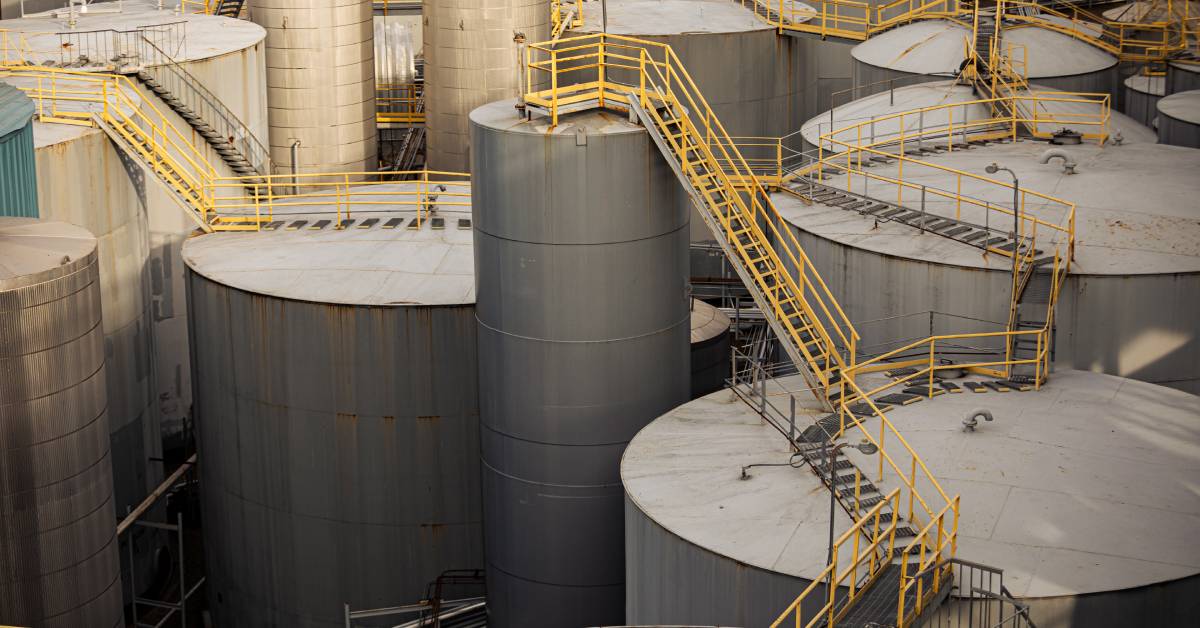
Reduces the Frequency of Repairs
Tanks lined with high-quality materials are far less susceptible to common issues like leaks, cracks, or structural damage caused by prolonged chemical exposure. Without proper protection, tanks can degrade quickly, leading to frequent and costly repairs that disrupt operations.
Liners act as a durable first line of defense, reducing wear and tear while significantly extending the lifespan of your tanks. This extended lifespan results in fewer maintenance interventions, saving both time and money, and allowing for a more efficient and cost-effective maintenance routine.
Prevents Downtime Costs
Unexpected equipment failures can halt workflows, delay projects, and lead to significant financial losses. Tanks without proper protection are more vulnerable to damage, which can cause:
- Operational disruptions
- Unplanned downtime
- Increased repair costs
- Employee harm
Chemical tank liners help prevent such failures by shielding tanks from chemical damage and structural degradation, ensuring they remain functional and reliable.
Lowers Risks of Contamination
Unlined tanks are at risk of leaking harmful contaminants into their chemical contents, causing product waste, contamination, or the need for expensive additional treatments. These contaminants can compromise the quality of your stored materials and lead to operational inefficiencies.
Chemical liners create a completely sealed and impermeable surface, significantly reducing the risk of contamination. This lower risk of contamination ensures the safety, purity, and quality of your chemical products, helping you maintain compliance with industry standards and deliver consistent results.
Decreases Cleaning Expenses
Cleaning unlined tanks can be a labor-intensive and time-consuming process, especially when residue or buildup from chemicals accumulates over time. This buildup often requires more manpower, harsher cleaning agents, and longer cleaning cycles, all of which drive up costs.
Chemical tank liners feature smooth, non-stick surfaces that resist residue accumulation, making cleaning faster and easier. By cutting down on cleaning labor, reducing the use of harmful chemicals, and streamlining maintenance, liners contribute to significant cost savings while ensuring tanks are ready for use more quickly.
Withstands High Temperatures
Many chemical processes involve exposure to extreme temperatures, which can weaken and degrade tank materials over time, leading to:
- Cracks
- Warping
- Structural damage
Chemical liners can withstand high temperatures and remain durable under these conditions, preventing heat-related damage. By maintaining their integrity in extreme environments, liners reduce the need for frequent maintenance and repairs caused by thermal stress, helping your tanks perform optimally even under challenging conditions.
Minimizes Environmental Compliance Fines
Leaking tanks pose serious environmental risks, such as spills or the release of hazardous materials, which can result in regulatory fines, expensive cleanup costs, and reputational damage. Unlined tanks are particularly vulnerable to leaks, especially near corrosive chemicals.
Chemical liners provide a solid, sealed barrier that prevents leaks and ensures compliance with strict environmental regulations. By mitigating these risks, liners help protect your operations from costly fines and safeguard your reputation as an environmentally responsible organization.
Adapts to Different Chemicals
Not all tanks can handle the wide range of aggressive or reactive chemicals used in industrial processes. Unlined tanks can deteriorate quickly when exposed to highly corrosive or abrasive substances, leading to frequent repairs or replacements. Chemical tank liners are also able to resist a variety of corrosive, abrasive, and reactive chemicals. This adaptability ensures your tanks remain in optimal condition, no matter what substances you’re working with.
Improves Structural Integrity
Unlined tanks exposed to harsh chemicals over time are prone to developing structural weaknesses, such as cracks, warping, and even complete structural failure. These issues not only compromise safety but also require costly repairs or replacements.
Chemical liners act as an additional layer of reinforcement, supporting the tank’s structure and preventing damage caused by prolonged chemical exposure. By improving structural integrity, liners extend the lifespan of your tanks, ensuring they remain safe and functional for years to come.
Lowers Insurance Premiums
Tanks protected by chemical liners are far less likely to experience leaks, failures, and environmental hazards, which lowers their risk profile. Insurers often view operations with lined tanks as more secure and less prone to incidents, leading to reduced operational insurance costs.

Facilitates Predictable Maintenance Schedules
Unlined tanks are more prone to unexpected failures, which can result in unplanned and costly emergency repairs. These unpredictable issues can disrupt operations and strain budgets. Lined tanks, on the other hand, experience fewer problems, allowing for more predictable and manageable maintenance schedules. This predictability helps you plan and budget for upkeep more effectively.
Reduces the Impact of Temperature Fluctuations
Frequent temperature changes can cause tank materials to expand, contract, and eventually develop cracks or leaks. Over time, this structural weakening can compromise the tank's functionality and lead to expensive repairs or replacements.
Chemical liners can also absorb and mitigate the effects of temperature fluctuations, ensuring tanks remain stable and intact even in environments with extreme or frequent temperature changes. This added protection enhances tank durability and reduces maintenance needs.
Avoids Emergency Repairs
Emergency repairs are not only stressful but also significantly more expensive than routine maintenance. The urgency, complexity, and potential downtime associated with emergency interventions can quickly increase costs and disrupt operations. This proactive approach saves you from unplanned expenses, operational disruptions, and the stress of scrambling for solutions when issues arise.
When you invest in chemical tank liners, you reduce maintenance costs while also protecting your equipment and reducing the likelihood of failures. By shielding your tanks from corrosive substances, high temperatures, and structural wear, you can optimize the performance of your storage systems while keeping costs under control.
Adopting this solution enhances operational efficiency, extends the life of your assets, and reduces overall maintenance expenses, so pick up your chemical containment liners today from us at Royal Liner! We make saving on maintenance costs and protecting your equipment easy.
Protecting the environment is more critical than ever as industries and businesses seek sustainable solutions to reduce their ecological footprint. One impactful yet often overlooked strategy is the use of durable tank liners for storage vessels. These specialized liners not only improve operational efficiency but also contribute significantly to environmental preservation. Durable tank liners have numerous environmental benefits, helping you to minimize waste, prevent contamination, and support greener practices.
Prevent Leakage and Soil Contamination
Durable tank liners serve as a robust barrier that securely contains liquids and chemicals, ensuring they stay where they belong. By preventing leaks, these liners help avoid harmful substances seeping into surrounding soil, which can cause long-term damage to ecosystems and contaminate groundwater supplies. This protection is essential for industrial operations near sensitive environments, where even small leaks can have significant consequences over time.
Reduce Hazardous Waste Generation
Equipping your tanks with strong, high-quality liners greatly reduces the risk of material leakage or structural degradation. With the right liners, you also minimize the amount of hazardous waste generated, which would otherwise require energy-intensive processing or complex disposal. By reducing waste, you not only lower operational costs but also reduce your company’s environmental footprint, supporting more sustainable practices in the long run.
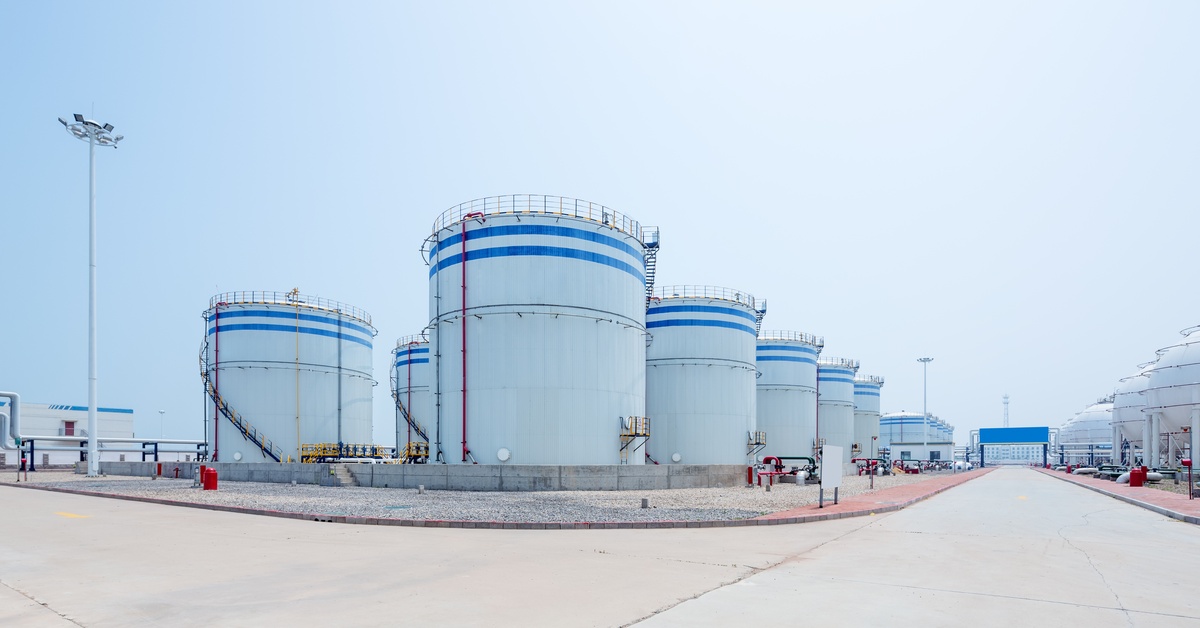
Prolong Tank Lifespan
Tank liners act as a shield against corrosion, wear, and chemical reactions that can weaken the internal structure of storage tanks. By protecting tanks from these damaging factors, liners help extend their lifespan significantly, reducing the need for frequent and costly replacements. This conserves valuable resources, minimizes waste, and decreases the environmental impact associated with the manufacturing and transportation of new tanks.
Minimize Risk of Groundwater Contamination
By effectively containing spills and leaks, tank liners play a crucial role in protecting nearby groundwater reserves. Contamination can have devastating effects on ecosystems and human health because groundwater is a vital resource for drinking water, agriculture, and many other industries. Durable liners ensure that harmful pollutants are kept out of these reserves, safeguarding both the environment and community well-being.
Support Safe Chemical Storage
Storing chemicals safely is a critical responsibility for industries handling hazardous materials, and durable liners are a key component of this safety process. These liners act as a robust barrier, preventing breaches and leaks that could release toxic substances into the environment, contaminating soil, water, or air.
The consequences of such leaks can range from environmental disasters to health risks for workers and nearby communities. By using reliable liners, companies can not only maintain safety but also comply with strict environmental regulations. This proactive approach ensures a safer industrial setting for employees, protects local ecosystems, and builds trust with stakeholders.
Decrease Energy Consumption for Remediation
When you prevent spills and contamination at the source, there’s no need for energy-intensive and costly cleanup operations. Durable liners provide a first line of defense for storage tanks by preventing leaks before they occur. This extra line of defense eliminates the need for extensive remediation efforts, such as soil excavation or water treatment, which consume significant energy and resources.
Enhance the Recyclability of Stored Materials
Contamination can render stored materials unusable or unsafe, making recycling and reuse nearly impossible. However, when you use tank liners to prevent exposure to harmful elements, materials remain in better condition and retain their original quality, increasing their reusability or potential for recycling. This approach benefits the environment and aligns with growing consumer and stakeholder demand for greener practices.
Reduce Plastic Waste From Tank Replacements
Frequent tank replacements generate significant waste, including metals, plastics, and other materials that end up in landfills. High-quality tank liners extend the life of storage tanks by preventing corrosion, wear, and leaks, drastically reducing the need for replacements. This benefits both the environment and the company’s bottom line by cutting down on the costs associated with purchasing, installing, and disposing of new tanks.
Aid Compliance With Environmental Regulations
With environmental regulations becoming increasingly stringent across industries, compliance is more important than ever. The financial and reputational costs of noncompliance can be devastating, including hefty fines, legal battles, and damage to public trust. Tank liners serve as a critical tool in meeting regulatory requirements by reducing the risk of:
- Leaks
- Spills
- Contamination
By taking proactive measures to prevent these issues, companies avoid potential penalties while also demonstrating a strong commitment to environmental stewardship. Building a reputation for compliance and responsibility can enhance relationships with regulators, stakeholders, and the public, strengthening the company's position in the market.
Lower Carbon Footprint of Operations
Leaks, spills, and tank failures lead to time-consuming repairs, replacement of materials, and emergency response efforts—all of which consume energy and resources, increasing a company's carbon footprint. Durable tank liners reduce the risk of such incidents, streamlining maintenance and minimizing downtime. These improvements contribute to a greener, more sustainable operation while also demonstrating the company’s commitment to reducing its carbon footprint.
Preserve Surrounding Wildlife
Industrial operations can pose significant risks to local wildlife, especially when harmful substances leak into the surrounding environment. Durable liners prevent pollutants from escaping into the air, soil, and water, ensuring nearby ecosystems remain undisturbed. This proactive measure helps preserve biodiversity and protects the natural habitats of plants and animals, particularly in areas near vulnerable ecosystems.
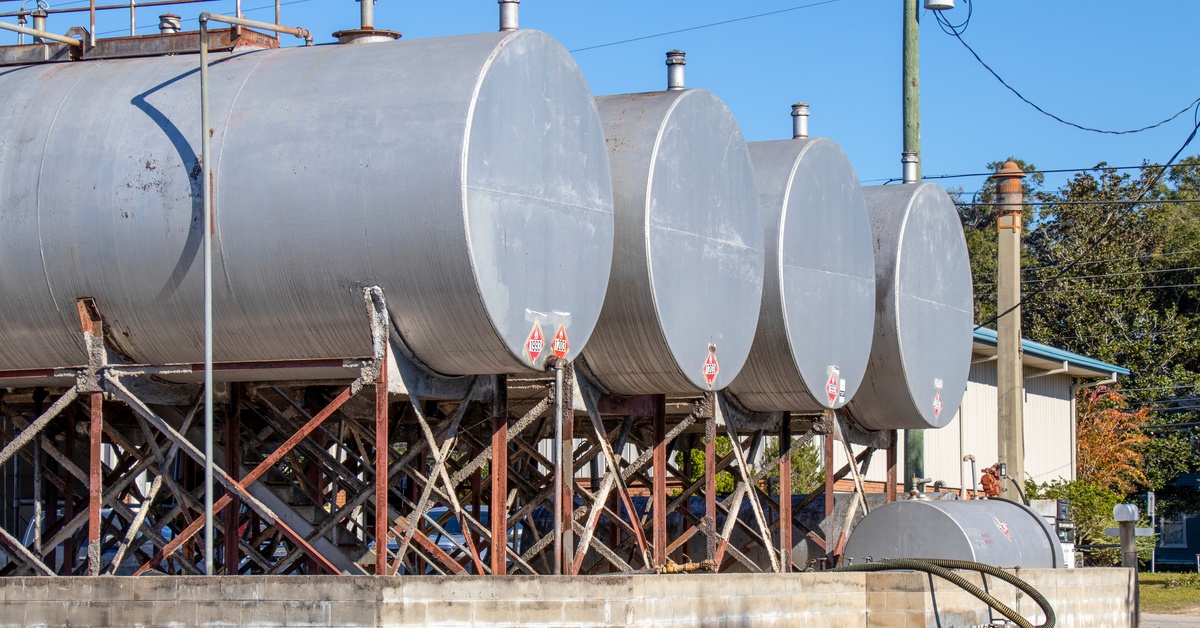
Limit Airborne Contamination
Some chemical storage tanks release vapors that can result in airborne contamination, impacting air quality and posing health risks to workers and nearby communities. Specialized tank liners minimize vapor release, ensuring harmful emissions are kept under control, reducing pollution that could harm the atmosphere and contribute to climate change. These liners offer a simple yet effective way to address regulatory requirements and improve air quality, creating a safer, cleaner environment for everyone.
Support Sustainable Supply Chains
Incorporating durable tank liners into your operations supports sustainability across your entire supply chain. Longer-lasting liners reduce the need for frequent tank replacements, decreasing the demand for raw materials and the energy associated with manufacturing and transportation. With durable tank liners, industries can reduce their reliance on nonrenewable resources and minimize waste, building more environmentally friendly and efficient supply chains.
Reduce Operational Waste
Operational waste is a significant challenge for many industries, and tank degradation caused by leaks and wear is a common contributor. Tank liners protect against these issues, reducing wear and tear and extending the lifespan of tanks, resulting in:
- Less downtime for maintenance
- Fewer resources spent on repairs
- Improved overall efficiency
Streamlined operations save both time and money while reducing environmental waste.
Durable tank liners represent a practical, yet powerful, tool for reducing your environmental impact. By integrating these liners into your storage and handling systems, you can prevent contamination, conserve resources, and support sustainability.
Whether you aim to reduce waste or comply with environmental regulations, tank liners provide a reliable solution for promoting eco-friendly practices in your daily operations, and Royal Liner is the tank lining company you can count on. Working with us and implementing this technology is a forward-thinking step toward a greener future without compromising your workflow efficiency.
Secondary containment systems play a critical role in environmental protection, particularly when handling hazardous substances. The Environmental Protection Agency (EPA) has developed strict regulations governing these systems to safeguard land, water, and communities from potential leaks or spills. If you want to stay compliant, it’s important that you know about the secondary containment EPA regulations. Proper care and containment protect both people and the environment while keeping your facility legally compliant.
Secondary Containment Definition
The EPA defines secondary containment as a crucial safeguard designed to prevent spills, leaks, and releases of hazardous substances from contaminating the environment during storage and transfer. These systems act as a backup barrier, ensuring that hazardous materials are securely contained even if the primary storage fails. They are essential for reducing the risks associated with chemical spills and protecting both human health and local ecosystems.
Spill Prevention Control and Countermeasure (SPCC) Rule
The Spill Prevention, Control, and Countermeasure (SPCC) rule applies to facilities storing significant quantities of petroleum or other hazardous substances that could threaten waterways in the event of a spill. According to this regulation, facilities must implement secondary containment measures for critical areas such as:
- Bulk storage containers
- Transfer points
- Loading and unloading zones
Developing a comprehensive SPCC plan ensures you're prepared to handle potential spills while maintaining compliance with federal standards.

Proper Storage Capacity
Your secondary containment system must be capable of containing at least 110% of the largest container's volume within the protected area. This extra capacity provides a safety margin in case of an overflow or simultaneous spills from multiple containers.
Additionally, for areas prone to heavy rainfall, it’s recommended to account for additional space to manage excess liquid from natural precipitation, reducing the risk of containment breaches.
Construction Material Requirements
Secondary containment systems must use materials that are impermeable to the stored substance and capable of withstanding environmental factors. These materials should resist degradation caused by prolonged exposure to hazardous chemicals, as well as physical wear and tear.
For example, containment for corrosive chemicals may require reinforced concrete or high-density polyethylene liners, while petroleum storage might require oil-resistant barriers to ensure long-term reliability.
EPA Compatibility Guidelines
Selecting materials for your secondary containment system requires adherence to the EPA’s compatibility guidelines. These guidelines ensure that the materials used in construction can withstand chemical reactivity and degradation specific to the stored hazardous substances.
Corrosive acids, for example, will need containment solutions made with acid-resistant coatings, while oil-based substances may require special synthetic liners. Failure to choose compatible materials can compromise the entire containment system, leading to potential environmental damage and compliance violations.
System Maintenance
To meet EPA compliance, regular inspections and maintenance of your secondary containment systems are vital. Inspections should involve checking for cracks, leaks, corrosion, or any signs of structural degradation. Proper upkeep not only ensures environmental safety but also prolongs the lifespan of your containment systems, saving you money in the long run.
Aboveground Storage Tanks (ASTs) Compliance
Aboveground storage tanks (ASTs) storing oil or hazardous chemicals must include secondary containment in the form of dike barriers, containment walls, or berms to comply with EPA regulations. These features contain potential spills from tanks, protecting nearby soil and water sources from contamination.
Emergency Response Integration
A secondary containment system is only as effective as the emergency response plan that supports it. Facilities should develop and regularly update emergency plans that detail actions that your team needs to take during a spill or leak. Training employees on emergency protocols ensures a quick, efficient response that minimizes environmental and legal consequences.
Rainwater and Drainage Management
Secondary containment systems exposed to the elements must include proper rainwater and drainage management solutions. Pooled rainwater or other non-contaminated liquids need testing and potential treatment before you release them into the environment.
Installing drainage systems with controlled filtration prevents accidental contamination, while automated sensors can help monitor and remove accumulated water safely. Adhering to these practices ensures compliance with environmental regulations and prevents unnecessary fines.
Inspections and Recordkeeping
The EPA mandates consistent inspections and detailed recordkeeping for secondary containment systems. Your team should conduct inspections at regular intervals to identify any vulnerabilities, from minor cracks to full structural failures. Maintaining thorough records of these inspections not only demonstrates compliance during audits but also helps track system performance over time.
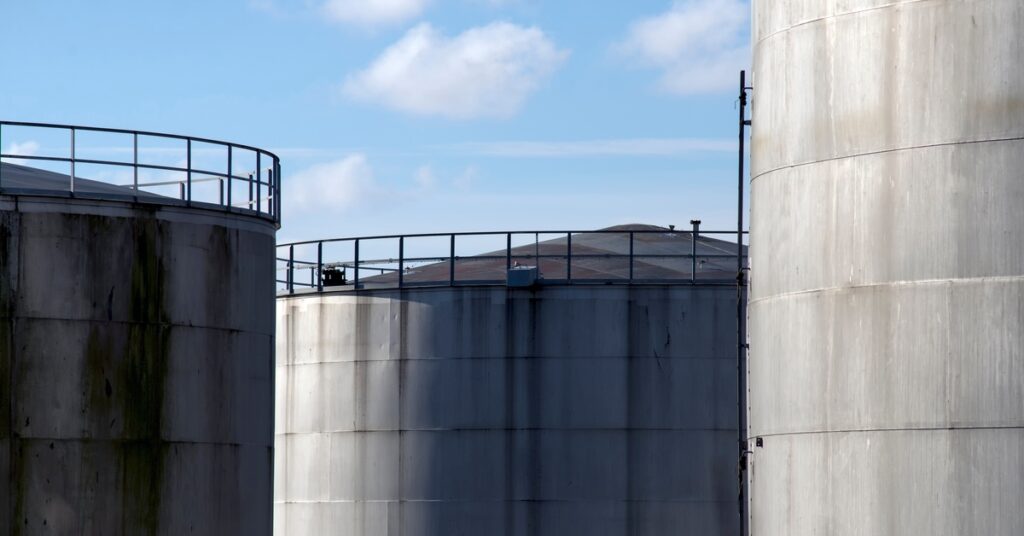
Indoor vs. Outdoor Containment
The location of your storage area greatly influences the design of your secondary containment system. Indoor containment systems benefit from protection against weather-related risks but may require ventilation to prevent hazardous vapors from accumulating.
Outdoor systems, on the other hand, need additional considerations like UV-resistant linings, weatherproofing, or drainage to handle rain and snow. Evaluating your unique storage environment will help determine the most effective containment solution.
Portable Secondary Containment
Portable secondary containment options are ideal for temporary or mobile storage needs, such as construction sites, remote field operations, or emergency spill responses. These systems, which include portable berms, spill trays, and collapsible containment units, are lightweight, easy to transport, and simple to deploy on-site.
They provide a flexible and efficient solution for containing potential spills, especially in locations where permanent containment structures are impractical or unavailable. However, even with their convenience, portable containment must adhere to strict EPA requirements, such as material compatibility and containment capacity. Regular inspections and maintenance are critical to ensure these systems remain effective, especially in challenging conditions.
State-Level Regulations
While federal EPA regulations establish the baseline for secondary containment, each state may impose additional requirements tailored to its specific environmental priorities. These additional requirements often focus on addressing local concerns, such as:
- Groundwater contamination risks
- The proximity of industrial sites to sensitive ecosystems
- The management of hazardous materials in flood-prone areas.
For example, some states may require higher containment capacity thresholds or mandate additional safety measures for facilities near protected wetlands or drinking water sources. Businesses operating in multiple states must stay informed about varying regulations at both the federal and state levels to ensure full compliance.
Penalties for Non-Compliance
Non-compliance with EPA secondary containment regulations can result in significant consequences for businesses, ranging from heavy fines and legal action to serious reputational damage. These penalties can vary widely depending on the severity of the violation, the type of materials involved, and the potential environmental impact.
For instance, a major spill due to inadequate containment could lead to costly cleanup efforts, civil lawsuits, and even criminal charges in extreme cases. By understanding the risks and staying proactive about compliance, organizations can prioritize robust containment practices to protect both the environment and their operations.
When you know about secondary containment EPA regulations, you can protect the environment and safeguard your operations from legal and financial repercussions. Apply these guidelines and invest in the right secondary containment liners from us at Royal Liner. With us on your side, you can make being environmentally responsible easy!
Chemical tank liners play an indispensable role in maintaining industrial safety across various operational environments. No matter the industry—manufacturing, pharmaceuticals, or water treatment—protecting storage tanks from corrosion, leaks, and contamination is essential for safe and compliant operations. Flexible chemical tank liners from Royal Liner extend the life of your equipment while reducing the risk of accidents and environmental hazards, making them critical for industrial safety.
Corrosion Resistance
Chemical tank liners prevent corrosive substances from deteriorating tank walls over time. Corrosion weakens the tank’s structure, increasing the risk of failures that could lead to expensive repairs or tank replacements. By preventing corrosion, the tank remains structurally sound, even when exposed to harsh chemicals.
Leak Prevention
Tank liners create an impermeable barrier that prevents hazardous chemicals from seeping through the tank walls. This barrier is crucial for protecting the soil, groundwater, nearby ecosystems, and your facility from contamination. Leak prevention also keeps your facility compliant with environmental protection standards.
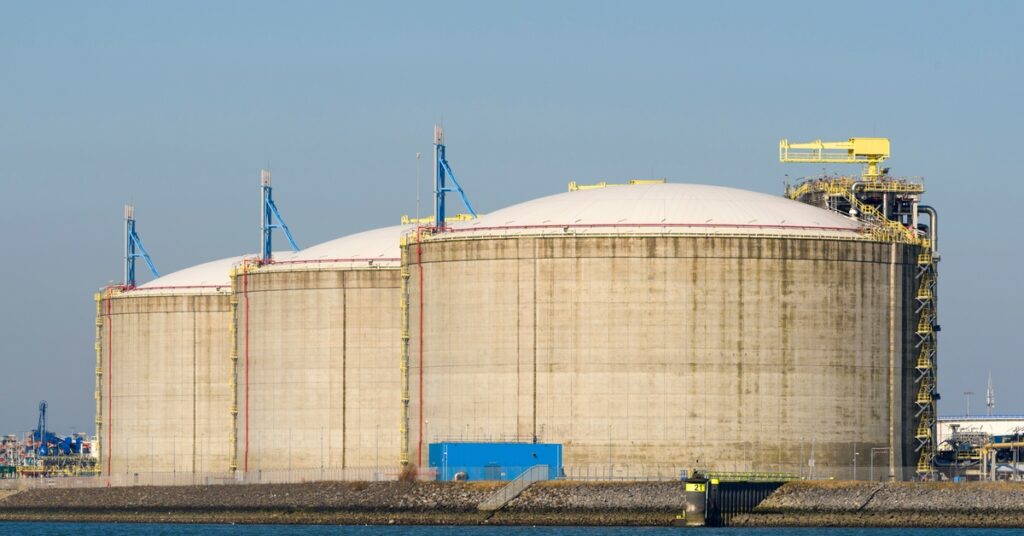
Prolonged Tank Lifespan
Liners reduce the amount of wear and tear that tanks endure over time. This minimizes damage caused by exposure to aggressive chemicals, extreme temperatures, or pressure fluctuations. As a result, the operational lifespan of your tanks extends, reducing the frequency and costs of replacements without interrupting operations.
Compliance With Regulations
Strict environmental and safety regulations govern the storage and handling of hazardous materials. A properly installed tank liner prevents leaks, spills, and contamination and adheres to these mandates. Staying compliant prevents fines, builds trust with customers and regulatory bodies, and demonstrates your commitment to safety and sustainability.
Containment of Hazardous Materials
Tank liners contain hazardous chemicals and reduce the chances of dangerous spills or leaks. These incidents can pose risks to your facility, the surrounding environment, and local communities. By installing high-quality tank liners, you comply with safety regulations and protect your workforce and the community from potential chemical exposure.
Minimized Risk of Cross-Contamination
When tanks store a variety of substances over time, the risk of cross-contamination increases. Residue from one chemical can react with the next, leading to contamination, quality issues, or safety hazards. Tank liners create a sealed environment so that residue from one substance doesn’t interfere with the next substance in the tank. By reducing cross-contamination, tank liners maintain product integrity and operational safety.
High Durability for Extreme Conditions
Flexible chemical tank liners from Royal Liner can endure the harshest industrial conditions, making them ideal for diverse applications. They consist of materials that can resist extreme temperatures, high pressures, and constant exposure to reactive or corrosive chemicals. Some liners can withstand years of continuous use without performance loss.
Protection Against Abrasion
Chemicals that flow, swirl, or react within a tank may cause abrasion and wear out the tank’s interior surfaces. Over time, this can weaken the structure of the tank, leading to leaks, corrosion, or catastrophic failure. Tank liners absorb the impact of abrasive materials and prevent surface deterioration while extending the tanks’ lifespan and efficiency.
Cost Effectiveness Over Time
While the initial investment in a chemical tank liner may be steep, the long-term benefits far outweigh the upfront cost. Tank liners drastically reduce the need for frequent maintenance and costly repairs, as they prevent damage before it occurs. They also extend the lifespan of your tanks by delaying the need for expensive replacements. Additionally, fewer disruptions caused by repairs or tank failures mean less downtime, allowing your operations to run smoothly.
Safety for Workers
Worker safety is a top priority in any industrial environment, and tank liners contribute to creating a safer workplace. By preventing leaks and sudden tank failures, liners reduce the risk of chemical exposure and accidents. This controlled environment not only minimizes potential injuries but also boosts employee confidence, knowing they are working in a safe space.
Environmental Protection
Sustainability is a growing concern, and flexible chemical tank liners from Royal Liner play a vital role in protecting the environment. They prevent potentially harmful substances from leaching into the soil or nearby water sources. Business leaders who use tank liners demonstrate their commitment to meeting environmental standards, reducing long-term liabilities, and enhancing their reputation.
Customizable for Different Applications
No two industries are the same, and neither are their requirements. You can customize tank liners to meet the unique needs of your operations, whether you’re handling highly acidic substances, alkalis, or other hazardous chemicals.
Custom liners provide the exact level of protection and durability your application demands. This flexibility makes them suitable for a wide range of industries, from chemical processing and manufacturing to food storage and municipal water treatment.
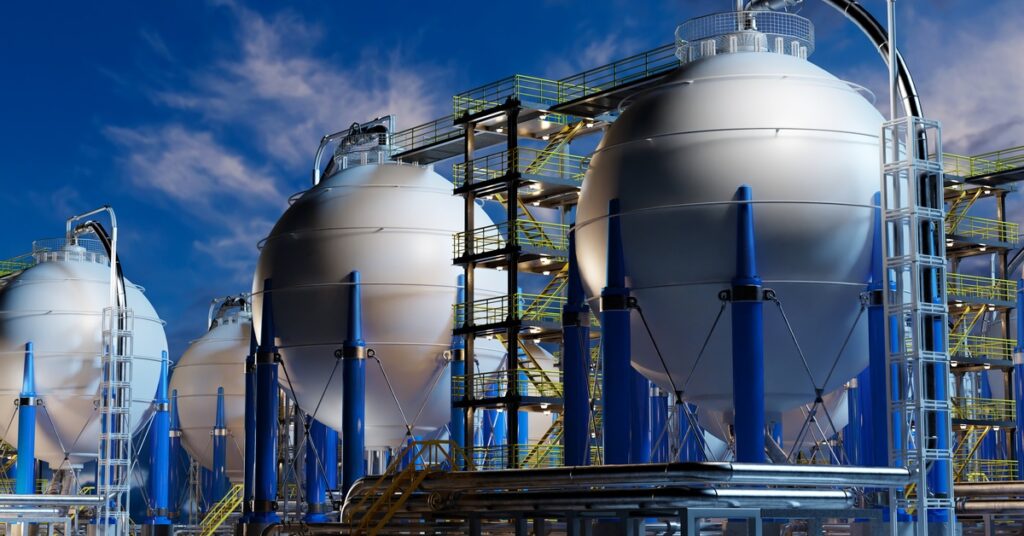
Easier Maintenance
Cleaning and maintaining tanks can be arduous and time-consuming, especially when dealing with stubborn chemical residues or contamination. Tank liners simplify this process by creating a smooth, non-porous surface that prevents buildup and makes cleaning easier. Reduced maintenance also saves time and minimizes downtime and labor costs. Regular inspections are more straightforward, as potential issues, such as cracks or leaks, are easier to identify on the liner’s surface than on the tank’s interior walls.
Prevention of Financial Losses
The financial consequences of tank failures, leaks, or contamination can be staggering. From regulatory fines and lawsuits to production delays and costly environmental cleanups, the expenses can quickly add up. Tank liners reduce these risks and their associated costs, protecting your bottom line while supporting smoother and more reliable operations.
Improved Operational Reliability
By addressing key concerns, such as leaks, abrasion, corrosion, and contamination, tank liners enhance the reliability of your operations. With fewer interruptions caused by maintenance issues or tank failures, your facility can maintain consistent performance and meet production targets more effectively. Reliable operations also boost customer satisfaction, build trust, and position your business for long-term success in your respective industry.
Chemical tank liners are critical components of industrial safety because they offer protection against corrosion, leaks, and other potential tank failures. The right tank liners also contribute to regulatory compliance and operational efficiency. If you’re looking for high-quality chemical tank liners, check out our offerings at Royal Liner. Investing in these liners is a step toward building safe and reliable industrial operations.
When it comes to choosing the right tank liner for your industry, there are several crucial factors to consider. From the type of materials being stored in the tank to the environmental conditions it will endure, each aspect plays a vital role in determining which liner will offer the best protection and longevity. A poorly chosen liner not only risks damage to the tank but can also compromise the safety and quality of the materials being stored, leading to additional costs and potential downtime. Learn what to look for when choosing the right tank liner for your industry.
Assess Your Industry’s Needs
The first step in choosing the right tank liner is to assess your industry’s unique requirements. Consider what materials you will store in the tank, their chemical properties, and any potential hazards or risks associated with them. For example, highly acidic or alkaline substances require liners with superior chemical resistance, whereas food-grade materials need liners that meet specific safety standards. When you fully understand what you’re working with, you can narrow down the search and find the liner that’s right for your specific conditions.
Consider Environmental Factors
Environmental conditions such as temperature fluctuations, humidity levels, and UV exposure can greatly impact the performance and lifespan of a tank liner. For industries operating in extreme climates—such as high heat or freezing conditions—it’s essential to select a liner that offers durability and high resistance.
Additionally, industries in high-salinity and corrosive environments, such as marine applications, require liners that can withstand these specific challenges. Choosing a liner specifically for your environmental conditions can significantly extend its lifespan and reduce the risk of failure.
Evaluate Material Compatibility
Compatibility between the tank’s construction materials and the chosen liner is another critical consideration. For instance, a liner that works well with a steel tank may not be suitable for a concrete or fiberglass tank. The liner must also be compatible with the materials stored inside the tank to prevent chemical reactions that could lead to damage or contamination. A thorough review of these interactions helps make sure that your liner will provide optimal protection, maintain your tank’s integrity, and safeguard the materials that you store.
Choosing the right tank liner for your industry is a decision that requires careful consideration of multiple factors. Thankfully, with the right liner, you can protect your tank and make sure that it operates efficiently and reliably for years to come. A little bit of planning and a lot of expertise can go a long way, so it’s essential that you work with the right tank lining company—Royal Liner. With our years of experience, we can design and manufacture the perfect tank liner to boost safety and maximize value for your company.
As industries become increasingly focused on safety and sustainability, secondary containment systems play a vital role in minimizing risks and ensuring operational integrity. PVC secondary containment liners are invaluable, but how exactly do they work? With expert construction and advanced technology, PVC secondary containment liners safeguard your operations.
Create a Barrier
The primary function of PVC secondary containment liners is to act as a secure and impenetrable barrier between your primary containment system and the surrounding environment. This protective barrier is designed to prevent harmful substances, such as chemicals, oils, or waste products, from escaping and causing environmental harm.
By effectively containing spills and leaks, these liners protect the environment and help organizations comply with strict regulatory standards. Meeting these requirements can prevent costly fines, legal liabilities, and reputational damage.
Custom Fit
Each PVC secondary containment liner is a perfect fit for the unique specifications of your containment system. Whether you’re working with tanks, reservoirs, pits, or other types of storage facilities, these liners provide a seamless, snug, and precise fit. This level of customization ensures that every corner and curve of your containment system is safe, eliminating gaps or vulnerabilities that could lead to leaks. These liners offer maximum protection, providing you with peace of mind that your system is safe against spills.
Leak Detection Systems
Many PVC secondary containment liners come equipped with advanced leak detection systems to enhance safety and reliability. These state-of-the-art systems continuously monitor the integrity of the liner, providing real-time alerts in case of a breach or leak. By identifying potential issues early, these systems enable you to take immediate action, minimizing downtime and preventing further damage. Leak detection systems are especially valuable in industries where hazardous materials pose significant risks, as they allow for quick containment and cleanup measures.
Easy Installation
Installing PVC secondary containment liners is a straightforward, efficient, and minimally disruptive process. The liners are prefabricated to your requirements, ensuring a perfect fit and allowing for quick deployment. Professional installation teams trained in handling these liners can complete the process with precision and speed, often within just a few hours.
Their expertise minimizes disruptions to your operations and allows for a seamless transition to a safer and more reliable containment system. Whether you’re upgrading an existing system or installing a new one, the quick installation process means your team can resume work without significant delays.
PVC secondary containment liners work by making safety, environmental protection, and operational efficiency easy. These liners serve as a secure barrier between your primary containment system and the environment, offering long-lasting protection against leaks and spills, and Royal Liner has the secondary containment liners for you. When you work with us, you can rest assured that you’re protecting your materials, your team, your facility, and your tanks.
If you want a reliable and effective method of safeguarding the environment while enhancing crop yields, you should look toward fertilizer containment liners. These high-quality liners protect against pollution and contamination while also boosting agricultural productivity. Fertilizer containment liners help your agricultural operation, but they also help to protect the environment. If you’re looking to revamp your environmental protection strategy, fertilizer containment liners are a must.
Prevents Leaching
Fertilizers contain essential nutrients like nitrogen, phosphorus, and potassium that are vital for plant growth. However, when applied improperly or in excess, these nutrients can leach into the soil and nearby bodies of water, leading to harmful algae blooms and contamination of drinking water sources. Fertilizer containment liners act as a physical barrier, effectively preventing leaching and safeguarding the environment from the adverse effects of nutrient overload.
Minimizes Runoff
Heavy rainfall and improper irrigation can cause fertilizers to run off fields and into surrounding waterways, leading to pollution and ecological imbalance. Fertilizer containment liners significantly reduce this risk by keeping the fertilizer securely in place, minimizing runoff, and protecting aquatic ecosystems from nutrient pollution, which can harm fish and other wildlife.
Saves Money
While the initial investment in fertilizer containment liners may seem significant, they can save money in the long run. By preventing pollution, contamination, and nutrient loss, these liners avoid expensive cleanup costs, potential fines from regulatory agencies, and the need for additional fertilizer applications. This cost-effectiveness makes them a smart choice for any agricultural operation.
Promotes Environmental Stewardship
As a farmer or landowner, the use of fertilizer containment liners demonstrates a strong commitment to environmental protection and sustainability. By implementing such environmentally responsible practices, you safeguard natural resources and contribute to a healthier and more sustainable future for all. This stewardship is increasingly important and will help you boost the reputation of your agricultural business.
Fertilizer containment liners protect the environment in a few important ways. With their ability to prevent pollution, minimize runoff, and promote environmental stewardship, these liners are an invaluable tool for any individual or organization striving to get the efficiency and environmental protection they’re looking for. Here at Royal Liner, we want to help, too, so be sure to choose our chemical tank liners when you need something to effectively contain your fertilizers.
If you are in the market for a new tank or need to repair an existing one, you have two primary options: tank liners and tank replacement. Each option has benefits and drawbacks, so it’s important to consider your needs thoroughly before choosing between tank liners and tank replacement. When you understand the differences, you can make the right choice for you.
Overall Costs
One of the first aspects to consider when comparing tank liners and tank replacements is the cost. Tank liners tend to be more affordable than full tank replacements for many businesses. Still, it’s important to remember that liners require periodic maintenance and repairs over time, which could add to the expenses in the long run. While a tank replacement might have a higher upfront cost, it could potentially reduce maintenance expenses over its lifespan.
Installation Time
Another crucial factor to consider is the time for installing a tank liner versus replacing an entire tank. You can usually install a tank liner relatively quickly, often within a few days, resulting in minimal downtime for your operations. This can be particularly beneficial for businesses that cannot afford lengthy disruptions. On the other hand, tank replacement can take significantly longer, potentially stretching weeks. Plus, you may have to shut down operations temporarily, causing potential disruptions and financial losses.
Material Compatibility
Consider the material compatibility when comparing tank liners to tank replacements. Tank liners are typically made from chemically resistant materials, such as polyethylene or polypropylene, which can handle a wide range of liquids and chemicals without degrading. If you need to store a corrosive material or a liquid at extreme temperatures, then a tank replacement with materials that withstand these conditions may be necessary to ensure safety and longevity.
Long-Term Benefits
Finally, consider the long-term benefits of both options. Tank liners can prolong the life of your existing tank, prevent further corrosion or damage, and save you money in the long run by avoiding the need for a complete replacement. On the other hand, investing in a new tank may come with additional features or technological improvements that could benefit your operations in the future, enhancing efficiency, safety, or compliance.
When considering tank liners or tank replacements, you have important things to consider in order to get what’s right for you and your organization. With careful consideration, you can make an informed decision that will suit your day-to-day operations, which is where Royal Liner can help. If you need a new tank liner, we’re here to ensure your tank’s longevity, safety, and optimal performance.
